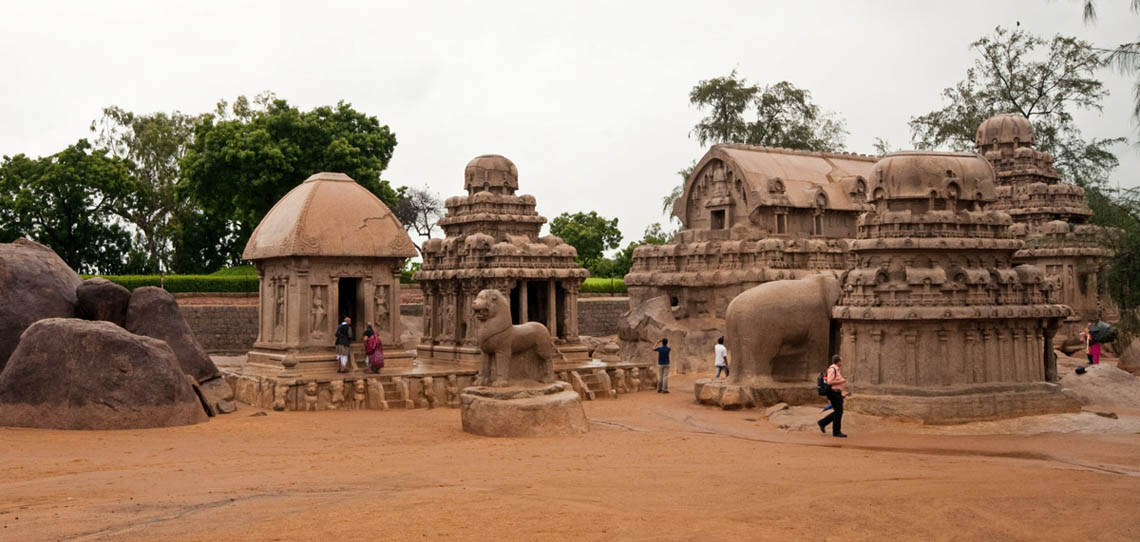Mahabalipuram also known as Mamallapuram is a town in Kancheepuram district in the Indian state of Tamil Nadu.
Attractions:
Thirukadalmallai Temple: This temple dedicated to Lord Vishnu. It was also built by Pallava King in order to safeguard the sculptures from the ocean. It is told that after building this temple, the remaining architecture was preserved and was not corroded by sea.The Shore Temple: A structural temple along the Bay of Bengal with the entrance from the western side away from the sea. Recent excavations have revealed new structures here. The temple was reconstructed stone by stone from the sea after being washed away in a cyclone.There is a giant open-air bas relief too.
Arjuna's Penance: Relief sculpture on a massive scale extolling an episode from the Hindu epic,The Mahabharata:
Varaha Cave Temple: It is a small rock-cut temple dating back to the 7th century.
Pancha Rathas (Five Chariots) : Five monolithic pyramidal structures named after the Pandavas (Arjuna, Bhima, Yudhishtra, Nakula and Sahadeva) and Draupadi. An interesting aspect of the rathas is that, despite their sizes they are not assembled,each of these is carved from one single large piece of stone.
Underwater city:According to descriptions by early travel writers from Britain, the area near Mahabalipuram had seven pagodas by the sea. Accounts of Mahabalipuram were first written down by British traveller John Goldingham who was told of the "Seven Pagodas" when he visited in 1798. An ancient port city and parts of a temple built in the 7th century may have been uncovered by the tsunami that resulted from the 2004 Indian Ocean earthquake. As the waves gradually receded, the force of the water removed sand deposits that had covered various rocky structures and revealed carvings of animals, which included an elaborately carved head of an elephant and a horse in flight. A small square-shaped niche with a carved statue of a deity could be seen above the head of the elephant. In another structure, there was a sculpture of a reclining lion. The use of these animal sculptures as decorations is consistent with other decorated walls and temples from the Pallava period in the 7th and 8th centuries.




